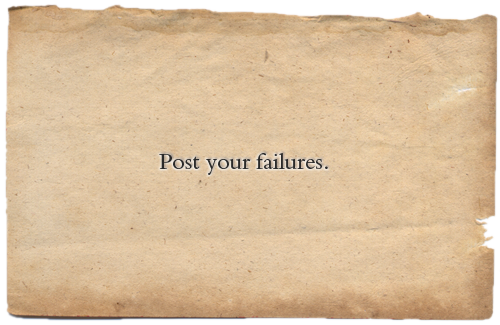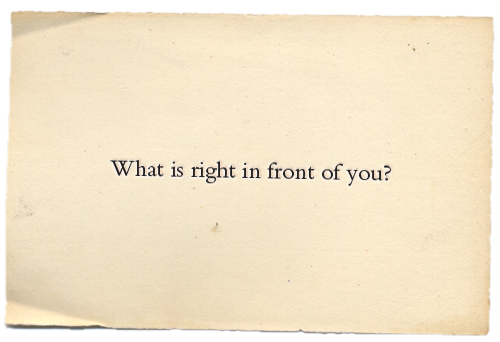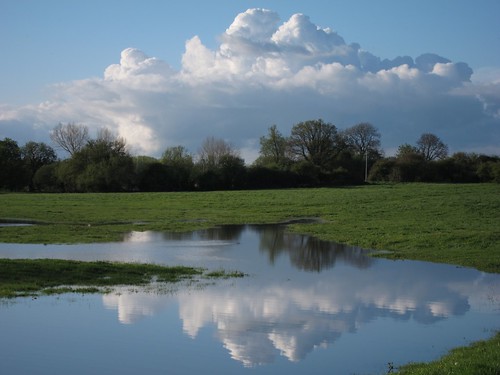I don’t dare go in the Studio yet. There are enough signs and warnings about (and I mean, like, actual Signs and Warnings!) to keep me from being foolish. From now on, no more mistakes, only caution. I have other lives to look out for.
My students are trickling in today, and we will gather at Northlight before dinner. Tonight, the real work begins. There is a pile of desks barricading the entry from the old Print Studio, and a solid 2×6 nailed to the Photo Doors. Who knows what they were keeping out, or, I fear, keeping in… I won’t do anything more until we’re all here. We can move safely in numbers and, I hope, restore power to the rooms and reclaim the Studio as our own.
There has been nervous laughter from the others at the School, as they know what we’re here to do. My white arm-band lets everyone know that I am still healthy and Living, though I wish others would follow my lead here. Nevertheless, I know that any remaining threat can be quickly taken care of, and in days we will be a well-trained Art Squad, ready to bring Truth and Beauty back to a world reborn. It will be primitive, of course, but I aim to show the pure wonder of the simple and the small, like a tiny bud pushing through the frost.
I have a good group of twelve comrades, including Jimmy The Fix. They may not all look strong, but I already sense a breadth of knowledge and a seriousness of purpose in each, and I am given hope. We meet briefly before dinner to make a plan of attack, and to assess each other’s best skills and strengths. While eight people have experience in Photography – and many of them having been here at Penland – only two admit to any experience fighting zombies: Mark, a veteran of both worlds, and clearly a formidable ally; and Crystal, a local with a deep understanding of life since the Apocalypse. She is the Loremistress. She is the Knowledge.
At dinner I sense a real pleasure at the days to come, and it makes me happy. Other new Warriors have arrived at the school (although I cannot trust them yet) and the extra noise and camaraderie in the Pines is joyful to hear. I already love my students, and seeing them gather on the couches before we attack, I feel like a proud father. I had put out the call, and they answered. We joke and laugh and tease, as only those who know no fear can do, and bond our group with a White Armband for each – we are Pure, and Unbitten and Alive.
It is dark – not a time one usually wants to clear an infected area – but it is a good time for us. I make sure everyone has a partner and a light, and I give a few pointers on the dangers of zombie combat in close quarters. My heavy tripod, for instance, has seen me through many scary situations, but it will be no good in the gang darkroom. We shall move slowly and carefully to clear the place and see what we can scavenge for our Art.
The studio is a mess. It was no short massacre here, I think, but a few humans battling the Turned. Tables and cabinets are tossed about and upended. Was someone trying to flee? Was someone trying to hole up here? It’s not clear – the windows are papered from the inside, suggesting hiding, but the doors are barricaded from the outside. Either someone thought they could survive a bite and keep doing their work here, or another person sealed up someone they knew and loved, unable to finish what must be done. I have seen it so many times, and it never ends up well for anyone.
With only two small exceptions, it seems safe and clear in here. There is no power yet, but we are Photographers and unafraid of the dark. Hell, we’re used to it. With our few torches and lanterns we manage to clean the place up and go through what’s been left behind. First, however, I must deal with the chunk of bloodied flesh sitting almost ceremoniously on the steel table. (Why was it left here? Why not eaten?) The second problem is the last small darkroom, which is locked and taped with warnings. A long smudge of reddish-brown leads from the door down the hall. Several students swear they hear breathing inside, but nothing shuffles or thrashes behind the door. We will board it up and leave it until daylight.
There are eight or nine boxes on the palette. One has white towels, although two are bloodied. Another one, knocked over and spilled, seems full of sweets, and beer, and little bottles of vodka – and one sad shoe. There is a box of paints and tapes and rolls that say Caution and Danger. We can use these to mark our safe territories, I guess. (Are there other studios we should quarantine…?) One box has a 35mm camera, but it is smashed; the lenses could be useful for us, however. Another small box has a compass, magnifiers and a map with disturbing markings – numbers and whole cities of the United States circled and highlighted. There is a sad box of Christmas gifts and lights, and one with just beans and coffee in it. The biggest box is a treasure trove of First Aid supplies… We can certainly use these to make our work.
The last box is a small plastic bin, padlocked tightly. It seems battered but unopened. We search the dark studio for a key, but find none. Someone suggests unscrewing the hinges, but it looks to be rather complicated. Finally Crystal takes the hatchet to it, cleanly snapping the hasp with the lock on it. Inside is the saddest sight yet: the last personal effects of someone – probably a younger boy – who just couldn’t leave them behind, I guess. There are playing cards and toys and odd meaningful knick-knacks, a strange group of Japanese Anime pictures of girls, some sparklers… There are also several keys. These, it turns out, open a few of our cabinets, which hold papers, bottles, and chemistry of all kinds. It’s not a full treasure for us, but much of it will be useful.
We will have to go through it all in the morning when we have light. For now, the studio is safe, and ours.







